Fiber Rich Foods
For most of us, fiber intake only becomes important when you’re constipated. However, nutrient-rich high fiber foods play a pivotal role in weight loss, craving reduction and balanced blood sugar. Recent research in the Journal of Nutrition suggests eating more fiber as a way to prevent weight gain or encourage weight loss. Over the course of the two-year study, the researchers found that boosting fiber by 8 grams for every 1,000 calories resulted in a weight loss of about 4 ½ pounds. What an easy way to jumpstart your weight loss, decrease cravings and increase the amount of nourishment you’re getting!
There are two different kinds of fiber: soluble and insoluble. Soluble fiber dissolves easily in water, forming a gel-like substance that keeps you satiated for longer, reduces cravings and eliminates toxins. Some studies have even found it to lower blood cholesterol and glucose
levels. Insoluble fiber doesn’t dissolve in water, but passes directly through the digestive system pretty much intact. Insoluble fiber increases stool bulk, keeps bowel movements regular and helps relieve acute constipation. Women should aim ideally aim for grams; men need 30-38 grams per day.
Ready to take the fiber challenge? Then try adding 8-16 additional grams of fiber into your diet every day for the next 2 weeks. To help you along, here are 6 fiber-rich foods that can help do the weight-loss work for you (and reduce toxins, too):
Artichokes, Jicama, Brussels sprouts, & Asparagus
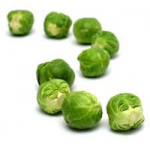 These nutrient-rich vegetables contain a high amount of water, fiber, vitamins and minerals. Brussels sprouts, jicama, Jerusalem artichokes, artichokes, chicory root, asparagus and plantains contain the highest amounts of soluble fiber. A medium artichoke has contains grams.
These nutrient-rich vegetables contain a high amount of water, fiber, vitamins and minerals. Brussels sprouts, jicama, Jerusalem artichokes, artichokes, chicory root, asparagus and plantains contain the highest amounts of soluble fiber. A medium artichoke has contains grams.
Raspberries & Blackberries
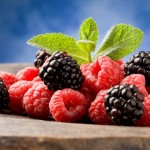 Blackberries, raspberries and apples are wonderful high-fiber foods. Berries are low in sugar and high in pectin & vitamin C, which help with eliminate toxins and lowers cholesterol. One cup of raspberries contains 8 grams of fiber and only 5 grams of sugar. Green apples contain a good amount of fiber, but are much higher in sugar. One medium apple contains 5 grams of fiber and 19 grams of sugar.
Blackberries, raspberries and apples are wonderful high-fiber foods. Berries are low in sugar and high in pectin & vitamin C, which help with eliminate toxins and lowers cholesterol. One cup of raspberries contains 8 grams of fiber and only 5 grams of sugar. Green apples contain a good amount of fiber, but are much higher in sugar. One medium apple contains 5 grams of fiber and 19 grams of sugar.
Chickpeas (Legumes)
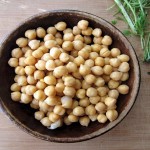 Chickpeas, also known as garbanzo beans, belong to the legume family,
Chickpeas, also known as garbanzo beans, belong to the legume family,
which also includes dried beans, lentils and split peas. Legumes are some of the best sources of fiber available. A 1/4 cup of chickpeas contains nearly 9 grams of fiber and 5 grams of sugar. Not crazy about garbanzo beans, but love hummus? Lucky you. A 1/2 cup of hummus contains about 7 grams of fiber. White, Navy and Adzuki beans are another superior source of fiber. Make sure you soak your beans before eating and cooking them. It removes the anti-nutrients such as phytic acid and enzyme inhibitors that are the reason many of us experience heartburn, reflux and gas following a bean- filled meal. Soaking before cooking enhances digestibility and nutrient absorption.
Chia Seed
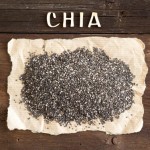 Chia seeds are a super food with a high fiber content. They’re also loaded with anti-inflammatory Omega 3s and minerals. Chia seeds are an unprocessed food that can be absorbed by the body whole (unlike flaxseeds). One ounce of seeds (about 2 tablespoons) contains 11 grams of fiber, plus vitamins and phytonutrients. Chia also contains both soluble and insoluble fiber and is a great addition to smoothies or plain water. For weight loss and blood sugar improvements, I recommend consuming 1-3 tablespoons per day. Please note that chia needs water to be absorbed properly; if taken without water, they can cause constipation and cramping. Increase your chia intake slowly and maintain good hydration levels to prevent this from happening.
Chia seeds are a super food with a high fiber content. They’re also loaded with anti-inflammatory Omega 3s and minerals. Chia seeds are an unprocessed food that can be absorbed by the body whole (unlike flaxseeds). One ounce of seeds (about 2 tablespoons) contains 11 grams of fiber, plus vitamins and phytonutrients. Chia also contains both soluble and insoluble fiber and is a great addition to smoothies or plain water. For weight loss and blood sugar improvements, I recommend consuming 1-3 tablespoons per day. Please note that chia needs water to be absorbed properly; if taken without water, they can cause constipation and cramping. Increase your chia intake slowly and maintain good hydration levels to prevent this from happening.
Peas
Peas are full of fiber. 1 cup of Black-eyed, Split or green peas contains approximately 11-16 grams of fiber. Black-eyed peas and split peas should also be soaked before cooking to enhance digestion and nutrient absorption.
Green Leafy Veggies
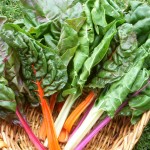 Green leafy veggies are nutritionally loaded with sulfur compounds, anti-oxidants and fiber to keep your liver healthy and happy, and excess weight at bay. Lightly cooking your greens increases their nutritional content and also reduces the compounds known as goitergens, which can interfere with healthy metabolism/thyroid function. One cup of cooked spinach, Swiss chard, Collard, Mustard or Beet greens provides 5 grams of fiber.
Green leafy veggies are nutritionally loaded with sulfur compounds, anti-oxidants and fiber to keep your liver healthy and happy, and excess weight at bay. Lightly cooking your greens increases their nutritional content and also reduces the compounds known as goitergens, which can interfere with healthy metabolism/thyroid function. One cup of cooked spinach, Swiss chard, Collard, Mustard or Beet greens provides 5 grams of fiber.
What about almighty Grains?
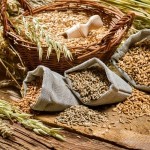 Most grains in this day in age have been stripped of their mineral and nutritional content and have to be fortified with low-grade synthetic vitamins in order to be marketed as “nutritious”. Even sprouted whole grains come at a cost. One cup of steel-cut oats, quinoa or brown rice or sprouted whole wheat bread contains only 3.5-5 grams of fiber and a whopping 40 grams of carbohydrate, which breaks down into sugar in the body. Not to mention that all grains are high in lectins, which have been shown to damage the intestinal tract and interfere with proper gut flora.
Most grains in this day in age have been stripped of their mineral and nutritional content and have to be fortified with low-grade synthetic vitamins in order to be marketed as “nutritious”. Even sprouted whole grains come at a cost. One cup of steel-cut oats, quinoa or brown rice or sprouted whole wheat bread contains only 3.5-5 grams of fiber and a whopping 40 grams of carbohydrate, which breaks down into sugar in the body. Not to mention that all grains are high in lectins, which have been shown to damage the intestinal tract and interfere with proper gut flora.
Note: If you tend to get gassy after increased fiber intake and tend to find your stomach bloated at night, fiber may be working against you. You may be suffering from SIBO (Small Intestinal Bacterial Overgrowth), which feeds on high-fiber foods. The easiest way to identify if this is to follow SIBO dietary guidelines for 2 weeks and see if your symptoms resolve or disappear. It can be a life-changer! The best app I’ve found to take the guesswork out of what you can and cannot eat comes from Monash University. Click HERE to check it out.



